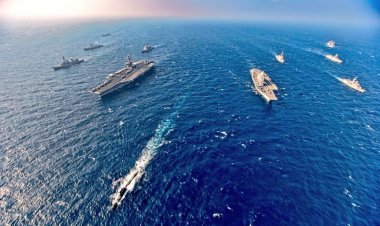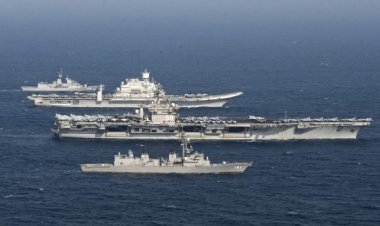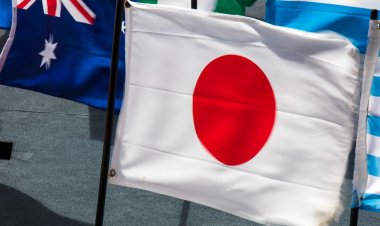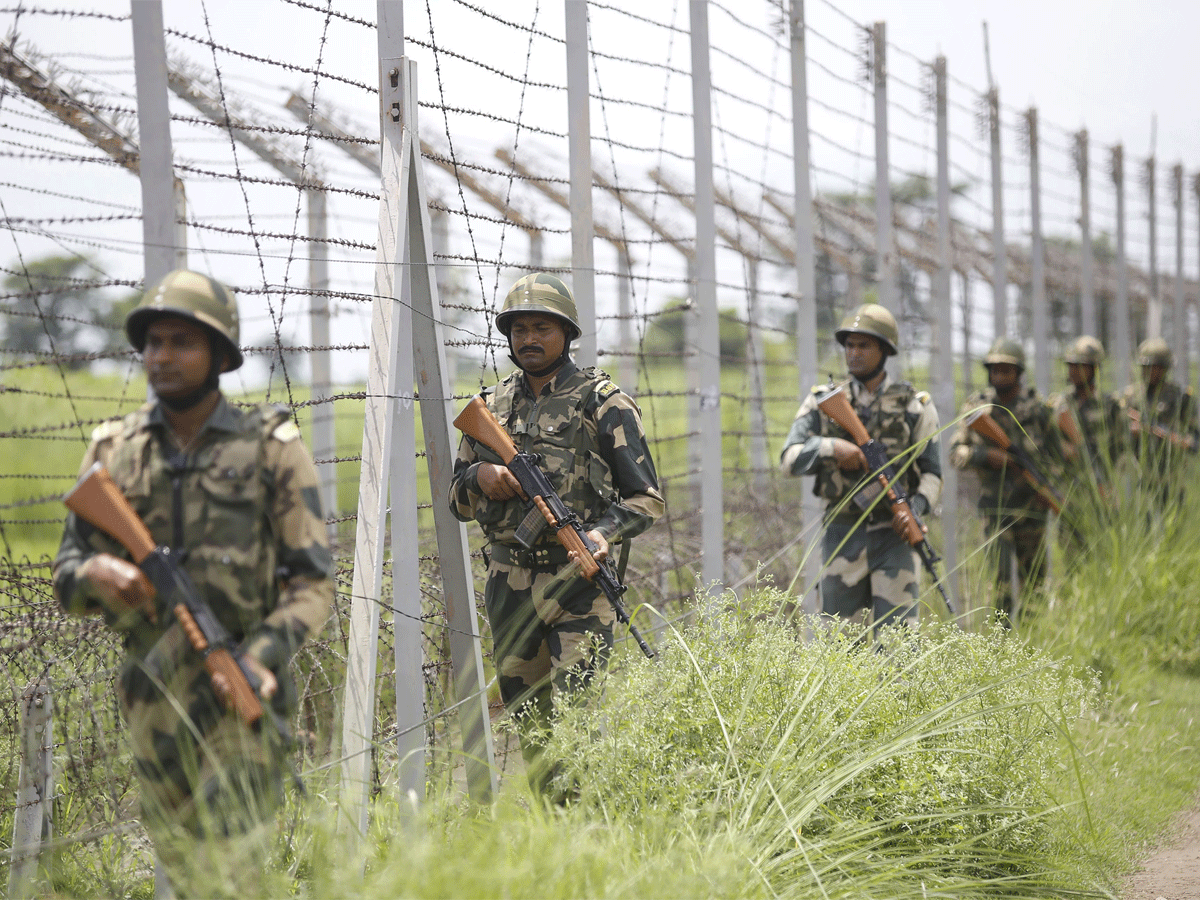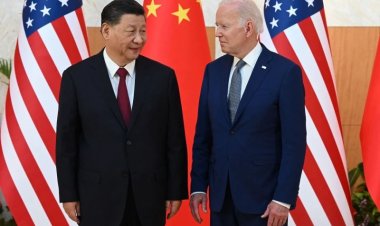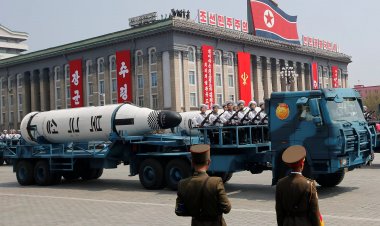Japan's East Asian Security Challenges (Part 1)
Japan faces innumerable national and maritime security challenges that not only pose a threat to its sovereign existence but are responsible for an overall worrying security scenario in East Asia with repercussions for the rest of Asia and the world. Japan is left to pick up the tiny scraps of whatever can be deemed 'peace' as far as its highly vulnerable and readily volatile region is concerned. Therefore, the future of Japanese security and self-defence lies in its own hands, and the US, too, has endorsed this highly practicable possibility.

Commentary (Part 1 Of two-part series for April 2021)
By Jay Maniyar
A previous Article by this Author for the Usanas Foundation briefly looked into the challenges on offer for Japan in the East Asian and Indo-Pacific regions as far as its fundamental national security and the safety of all its peoples is concerned. This Article assesses some of the East Asian security challenges faced by Japan in considerable detail. East Asia forms the critical geography to the east of Asia, occupying a terrestrial-maritime stretch of close to 12 million square kilometers. Japan is the one entirely maritime nation in the eastern East Asian sub-region, with Taiwan situated in the west East Asian periphery.
Japan lies in the East Asian terrestrial-maritime region where it carries immense geopolitical, geoeconomic, and geostrategic weight. The actions of its polity, no matter how minimal and much in tune with a pacifist policy rigidity stemming from its failures in World War II, are known to guide and shape the region's geopolitics. Japan's post-1945 pacifism resulted in the adoption of Article Nine of the Japanese Constitution on May 3, 1947. Article Nine even recommends the non-use of military force to settle contentious territorial disputes that may merit force utilisation depending on the challenge posed and the commitment of nations to gaining or regaining territory. In the wake of Japan’s many unresolved territorial disputes, Article Nine continues to serve as a dampener for its territorial interests that beget military action.
The major East Asian challenges faced by Japan are all to do with threats posed by unpredictable and temperamental nations that neighbour Japan through its maritime domain. North Korean nuclear concerns resulting in adverse security-weakening scenarios, threats posed by an emboldened Russia in its east and the Peoples' Republic of China to Japanese sovereignty through infringement by choice, and a mutual aversion with South Korea, resulting in security concerns, form the major threats to Japan. Additionally, Japan's national security is believed to be strongly affected by reasons outside Tokyo's control, such as the weaknesses in Japan's geography, climate change, and other interlinked environmental factors. Japan's 6,852 islands lie at the eastern edge of the Eurasian tectonic plate, which clashes with the Pacific plate, leaving it vulnerable to disasters such as the 2011 Fukushima Daiichi catastrophe, the fallout from which continues to cause problems between the parties involved.
Tokyo's East Asian Challenges and it's Strategy
Japan pursues a broad-ranging strategy in East Asia and beyond, which has much to do with its world view. It is a primarily benevolent country engrossed in financial aid outlays and assistance overtures to regional and extra-regional countries, chiefly through the Japan International Cooperation Agency (JICA). It has even sought to bring adversaries such as China to the 'peace' table by extending a friendly hand to a country increasingly perceived as a threat to one and all. This has been a hallmark of Japanese pacifism, a vital tenet of its strategic culture, if not a comprehensive embodiment of Tokyo's strategic culture itself. This pacifism appears well-suited to East Asia, where an (im)balance of power has long held itself while the rest of the world comes to terms with a multipolar world.
Unlike Beijing, Tokyo does not intend to create a debt trap or a dependency with its partner countries that belies a 'relationship of equals'. Instead, it has, on occasions, even waived off the debt in the larger interests of its partner countries and the world. Japan's security strategies have also run parallel to China in regions such as East Africa, where anti-piracy missions by foreign nations have become a norm. That said, there is an absence of a productive understanding between the two countries as far as the local territorial disputes such as the Senkaku/Diaoyu islets are concerned. Japan is also integral to multilateral efforts in the maritime domain aimed at improving security.
North Korea, or the Democratic Peoples' Republic of Korea (DPRK), is out-and-out an oddball in the region and a significant threat to the combined peaceful ambitions of a highly volatile region. The notable 1998 Taepodong-I ballistic missile test remains a turning point in the Japan-DPRK imbroglio, and routine missile tests by the DPRK in the Sea of Japan have deeply impacted the Japanese national security psyche. Moreover, the nuclear shadow persists regarding North Korea, and it matters immensely that Japan addresses this issue with adroitness. It is even apparent that the support to Pyongyang by Beijing complicates geopolitical rivalry in East Asia and corners Japan more than what would have been a unilateral case. Japan is left to deal with not just one-versus-one scenarios but even the belligerent one being supported by another one. This is illustrated by the DPRK-China and Russia-China alignment against Japan and requires a strategic rethink on Tokyo’s part.
In March 2021, a new People’s Liberation Army Navy Type-055 stealth-guided missile destroyer, as part of a flotilla, sailed the Sea of Japan for the first time and made a strong case for Chinese assertive activity in East Asia. The Sea of Japan, and the straits that are a gateway to it, are integral to Japan’s Exclusive Economic Zone (EEZ). China poses a threat that is as multidimensional in its 'construct' that it can be. The Air Identification Zone of 2013 has prevailed while regular Chinese surveillance sorties have wobbled Japanese defenses. Russia, too, has the tendency to rattle the feathers of the Japan Air Self-Defense Force, the JASDF. More often than not, the intentions of these fly-bys are to alarm Tokyo and alert the over 6,800-island Japanese island-nation to traditional military excesses. The threat in the air is posed by strategic long-range bombers of Russian and Chinese air forces.
Increased Russo-Chinese strategic cooperation also adds to Japanese angst in East Asia. While not an East Asian country itself, Russia remains an enigmatic threat for Japan owing to a growing closeness with China and synonymous aggressive behaviour near around Japan's EEZ. In fact, both the United States and Japan have expressed immense concern about what is deemed as Russian 'assertive behaviour' of its own. Russia retains an unpredictable outlook characterised by a Cold War mindset (Russian meddling in the 2016 American elections) and provocative unilateral military behaviour aimed at Japan in East Asia. The scope of security challenges being faced is also broadening with every day's sunrise. The nefarious Chinese hacking industry can potentially cause immense financial and systemic damage to countries such as Japan.
Meanwhile, a shift of focus to non-traditional domains not considered to be of strategic/tactical value even a few years ago is palpable in official Japanese strategic communication. Outer space, a massive field in which antagonist Russia has long been a technological heavyweight thanks to its Soviet inheritance. Japan faced alleged Russian anti-satellite activity in July 2020. Japan also prioritizes the cyber and electromagnetic domains that are crowding the already congested but perennially evolving non-traditional conflictual spaces and forcing countries to remain on the lookout in these areas. Continued strategizing on Japan's part in regard to alternative domains speaks volumes about the attention being paid by Tokyo to this domain(s).
South Korea is another piece that completes the East Asian jigsaw for Japan. It poses no direct security threats in terms of military exaggerations ala North Korea. However, a frictional relationship with Japan continues owing to a combination of working issues such as bilateral trade, unresolved historical differences such as the wartime reparations issue and the Japanese colonisation of Korea (1910-1945), and a lack of official cooperation. The designation of Japan as a mere 'neighbour' in the latest South Korean Defence White Paper has affirmed the ever-widening East Asian divide. Along with the explicitly belligerent nation-states, South Korea adds to Japanese concerns as far as East Asian longevity is concerned and The Japan Times was quick to identify the White Paper's classification of Tokyo as a "downgrade" by South Korean media channels.
Conclusion – The Plate is full for Tokyo
As described in this Article, Japan faces innumerable national and maritime security challenges that not only pose a threat to its sovereign existence but are responsible for an overall worrying security scenario in East Asia with repercussions for the rest of Asia and the world. Japan is left to pick up the tiny scraps of whatever can be deemed 'peace' as far as its highly vulnerable and readily volatile region is concerned. It is worth noting that despite its highly despicable past of just over seven decades ago, Japan does not pose a direct security threat to its neighbours as much as they do to Japan in the present circumstances. Apart from self-defence, Japan is compelled to keep a keen eye on developments resulting from geopolitics in East Asia, such as the China-Taiwan standoff. Just a few days ago, the Japanese Prime Minister committed himself to uphold Japanese pacifism by conveying non-military involvement in the Taiwan issue. This contributes vitally to Japanese security perceptions for a better East Asian future.
Japan is a staunch adherent to its self-declared pacifism (legalised largely through Article Nine of the 1947 Constitution of Japan and the American nuclear security protection) and does not seek to compromise on it with its extensive remilitarisation solely aimed at strengthening the many paradigms of what is mainly Japan's defence of itself. Japan's military assistance to Southeast Asian and African nations, despite its relatively decent character in aiding regional (and Japanese security by empowering partner nations), is a minor say in its defensive approach to confrontation and conflict. All these endeavours notwithstanding, Japan remains susceptible to the extent that its entire security apparatus is poorly shaped no matter how well-poised the Japanese security strategy appears to be, in East Asia. This is also despite activism involving endeavours such as Theatre Missile Defense (TMD) systems (in conjunction with the United States) deployment on its islands.
At present, it is clear that Tokyo's biggest security challenges are posed by established sovereign nation-states with first-rate armed forces meant to achieve geostrategic aims, goals, and objectives. This is a matter of added concern owing to Japan has been historically reliant on the presence of the United States and the security guarantee afforded by the world's sole superpower. The future of Japanese security and self-defence lies in its own hands, and the US, too, has endorsed this highly practicable possibility. Further, security threats originating from the acts of nature in the maritime domain will also be a major challenge. Undersea earthquakes bear the high-level potential to sabotage Japanese infrastructure in billions of dollars through tsunamis, while typhoons have become a staple in climatically-edgy East Asia. Together, the security challenges faced by Japan are second to none in the region.
Part 2 of a series of articles on Japan's security challenges in East Asia will offer the way ahead for Japan in dealing with its stifling and fragile (primarily) maritime security scenarios.
Jay Maniyar is a Research Associate at the National Maritime Foundation, New Delhi, India. Mr. Maniyar is researching innumerable areas related to the maritime domains of Japan, the Republic of Korea, Indonesia, Singapore, Malaysia, the Association of Southeast Asian Nations (ASEAN), and the Indian Ocean and the Indo-Pacific regions.
Disclaimer: The views expressed above entirely belong to the Author of the Article, and any attribution of them to his employers, the National Maritime Foundation, and/or the Usanas Foundation are false.

